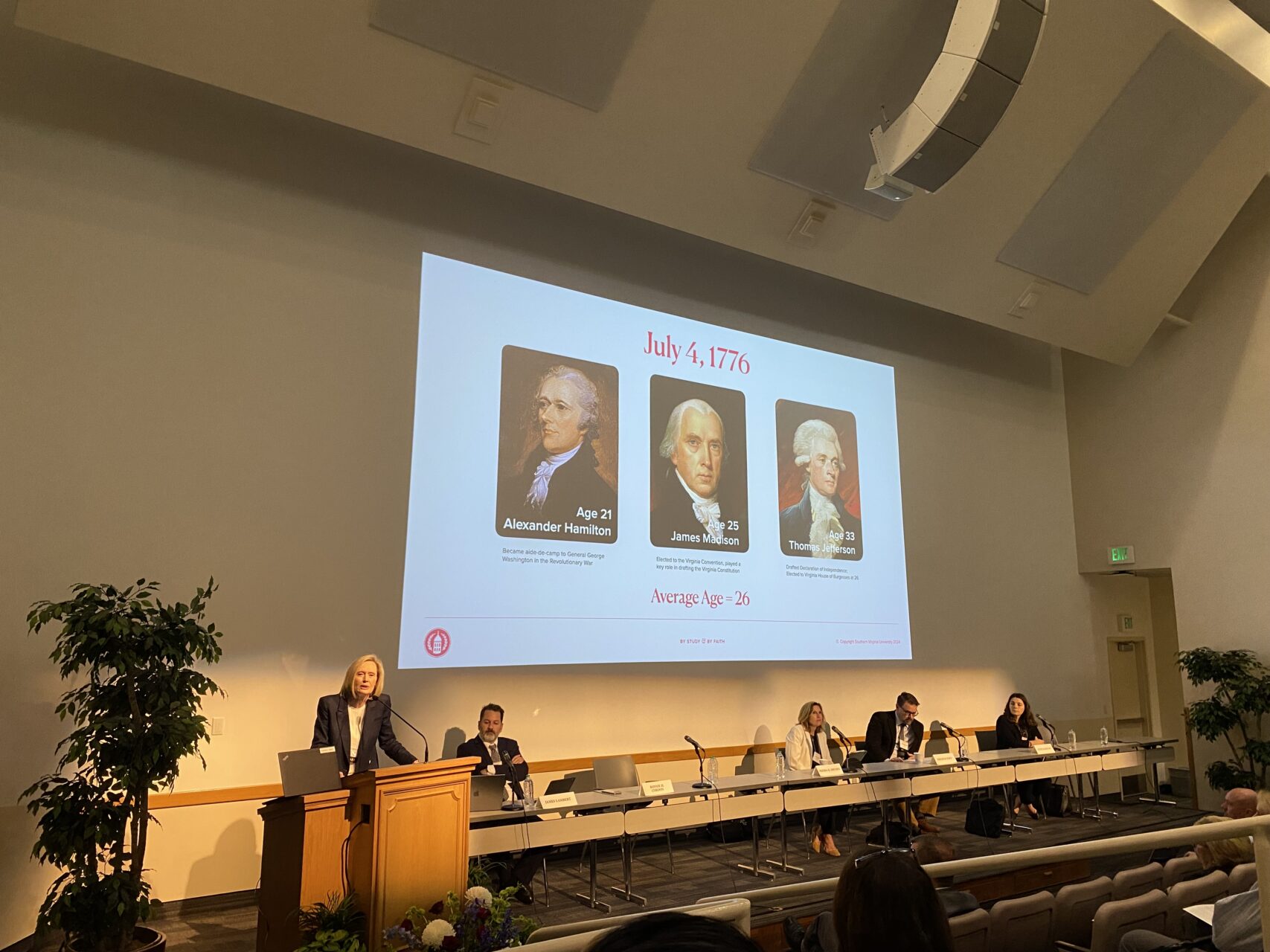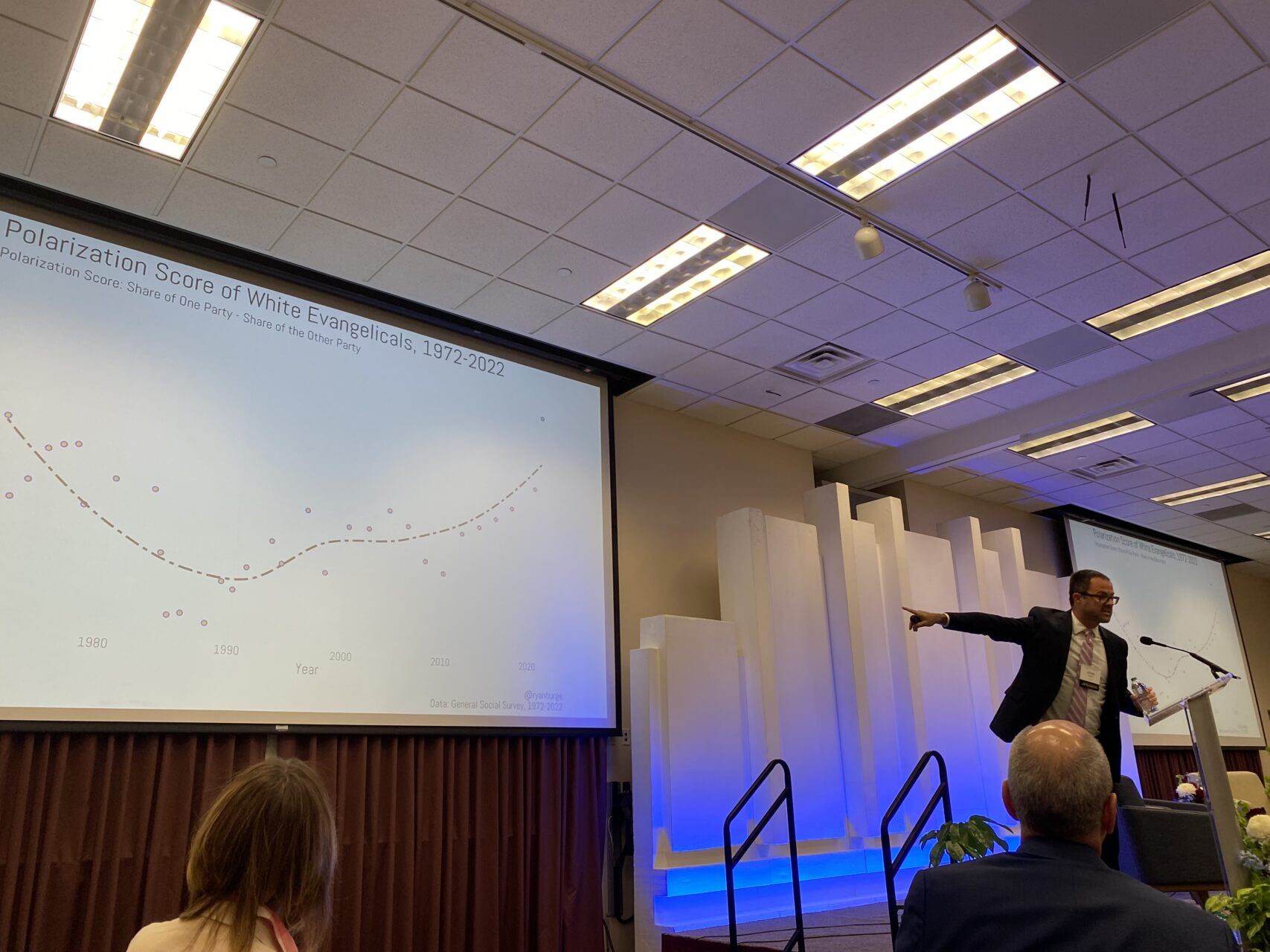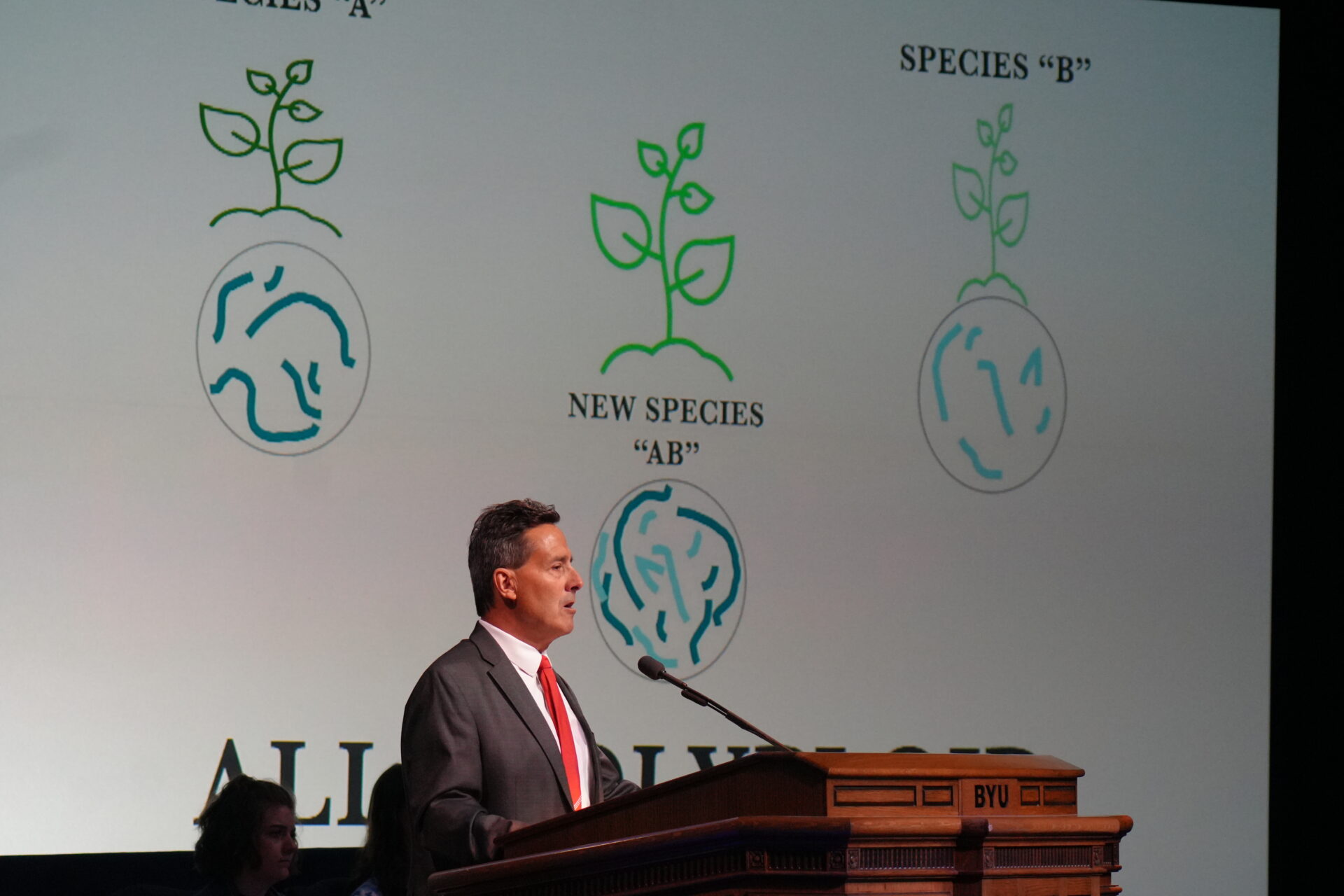This article was one of the two featured articles in the Southern Virginia University newsletter. Courtney was checking her mail when I heard her call for me to "come here." I went in and she had a huge grin on her face.
While reading the SVU newsletter she noticed that the photo for the second article looked familiar. She thought it was taken from the same angle as a picture Ethan had sent her. She clicked on the article and saw that it was a link back to a Daily Universe article written by Ethan! She thought that was really cool. Their two colleges collided at that moment. I had to tell Ethan and he was happy about it. SVU picked up the article pretty quickly because it had only just been published. What a cool experience for the kids.
BYU Religious Freedom Annual Review focuses on peacemaking
By Ethan PackJune 26, 2024

Scholars and religious leaders from across the U.S. gathered at BYU’s Religious Freedom Annual Review on Thursday, June 20 and spoke on peacemaking and religious pluralism.
The conference began with opening remarks from Brett G. Scharffs, the director of the BYU International Center for Law and Religion Studies, and President Shane Reese. President Reese spoke briefly about his time on a panel of higher education leaders put on by the American Council on Education.
“It was a remarkable gathering of presidents who doctrinally and theologically had differences,” President Reese said, “and yet we were drawn together by a common purpose, which was the virtue-filled education that is largely missing in higher education today and that is candidly affiliate that is afforded us because of religious freedom.”
President Reese drew comparisons between BYU and other universities like Harvard, which were both founded by deeply committed religious believers forced to leave home due to persecution, he said.
“Religious freedom isn’t just good for BYU, and it’s not just good for other religiously affiliated institutions of higher education, or for higher education in general. No, religious freedom is a human good and it belongs to all, believers and nonbelievers alike,” he said.
After President Reese’s remarks, Ryan Burge, an associate professor of political science at Eastern Illinois University and a pastor, spoke on significant statistics in the current religious freedom and pluralism climate.
“So here’s my argument in a nutshell. What America looks like in the future is simply this: There’s going to be a significant number of very religious, very conservative people on one side of the spectrum,” Burge said. “And on the other side of the spectrum, there’s going to be a very large, very non religious, very liberal group of people. And there’s going to be no one left in the middle.”

Burge urged attendees to work with those they disagree with to promote religious freedom for everyone. “We’ve got to understand that most people are willing to move this country forward. They’re willing to compromise. They’re willing to find middle ground,” he said.
Religious speakers, scholars and educators participated in panels throughout the day. Several sessions were dedicated to legal aspects of religious freedom, like The Religious Freedom Restoration Act at 30 session with speakers from Agudath Israel of America, Harvard Law School and the Wheatley Institute.
Other sessions focused on peacemaking for the rising generation. Bonnie H. Cordon, president of Southern Virginia University, and other professors and leaders from the university spoke on what they have done to help their students become peacemakers.
“Here at Southern Virginia University this next year, our goal is to practice, to help people see what they can be and how they can continue dialogue that becomes meaningful,” Cordon said. “What will happen? Relationships increase and all of a sudden, things change.”
This was the 11th year of the Religious Freedom Annual Review. This year was the first to include several breakout sessions geared towards young adults and the rising generation.




